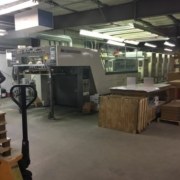Bull Moose
This bull moose was videotaped in the southern Green Mountains on the second weekend of deer season. And it’s a lovely sight to see. Moose populations were booming in the early 2000s, but numbers have since dropped precipitously. The population estimate the state currently gives – around 2,200 statewide – is about half of what it was a decade ago. Biologists say that during the boom years, the population was high enough in parts of northern Vermont to exceed the land’s carrying capacity, and so part of the reason for the crash was depleted habitat. Another culprit was winter ticks, which are enabled by climate change. (Warmer winters means more ticks and a longer tick questing period.) Brain worm is another culprit; this parasite is carried by whitetailed deer and spread in deer feces, so as deer populations grow, moose populations suffer.
The state is currently conducting a radio-collared moose study which may shed some more light on moose and tick interplay. In the meantime, all healthy moose sightings – especially in the south, where populations were never that high – are great to see.
One Last Look
Our designer, Lisa Cadieux, and I went to Springfield Printing Corp. today to give the book a final look. I drove up Route 7A from Shaftsbury to Manchester, then Route 11 and 30 through the Green Mountain National Forest, up Bromley, down into Londonderry, then along the Middle Branch into Chester. From there I ran up 103 and right angled onto 10 to get to North Springfield. Lisa was coming from Burlington, so her options were more varied. I forgot to ask how she drove. Likely it was on the Interstate to save time and brain capacity, but maybe in the spirit of the book we both just helped build it was down 100, through Waitsfield and Granville, Pittsfield and Plymouth, the Mad River and then the White and then the Black. Or maybe it was 12 to 106, and Randolph and Bethel and Barnard and Reading and all those other little heart-of-Vermont towns. I leave you with the image of two people driving from their respective corners of Vermont and meeting in the middle at a Vermont printing company that’s been in one family since the 1960s. All of us working together to publish a book about life in rural Vermont. It feels very 2020 in a good way.

